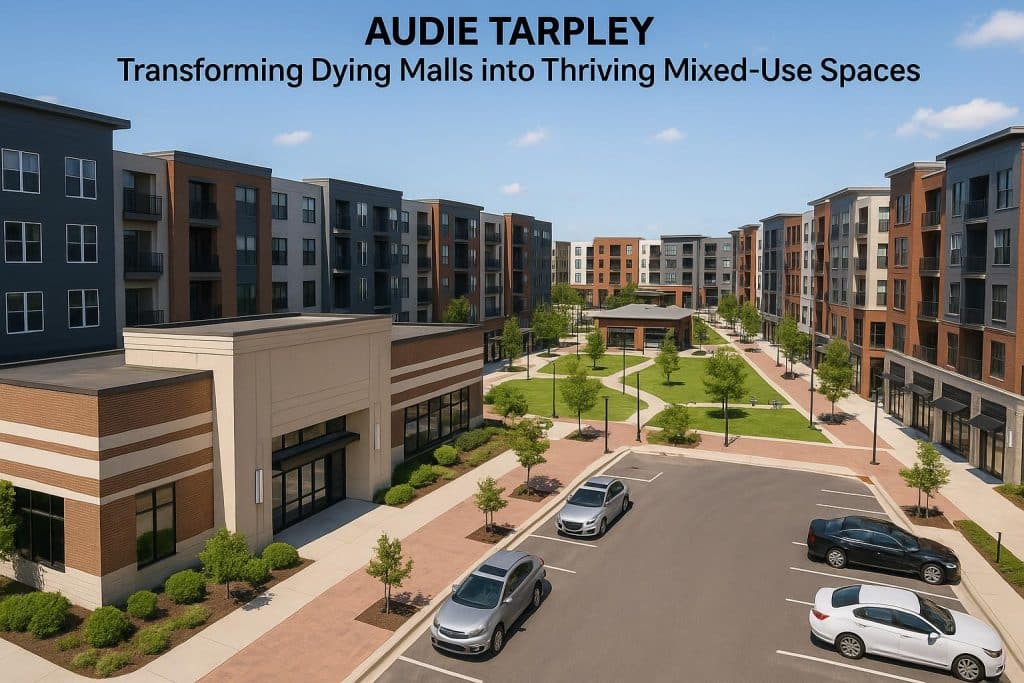Audie Tarpley, a seasoned construction and development executive, has guided numerous large-scale commercial and residential projects throughout his career. As president and owner of Dillon Construction Group in Indianapolis, Audie Tarpley has overseen major design-build projects such as the Quarry Luxury Apartments and the Lids corporate headquarters. With prior leadership roles at Duke Realty Investments and Bear Creek Capital, he has developed deep expertise in preconstruction planning, entitlement, and value engineering. His professional background aligns with the growing trend of adaptive reuse in real estate development—an area where construction leaders like Tarpley play a vital role in repurposing aging commercial properties. His career exemplifies the strategic insight and technical skill needed to navigate complex zoning and design challenges in projects such as transitioning dying malls into vibrant mixed-use developments.
Transitioning Dying Malls to Mixed Use Offers Benefits
The American mall served as the centerpiece for many communities for decades. Many have fallen into disrepair, becoming dying shopping centers. Some municipalities have adopted an adaptive reuse approach to transform them into mixed-use developments, providing communities with housing and sustainability benefits.
As it stands, only 1,000 malls still exist in 2025, with 25 percent of them expected to close within the next three to five years, according to an October 2024 NYU Schack’s Blueprint article. Experts predict that only 150 of these malls will remain in the next decade.
Converting dying malls into mixed-use developments has been a trend for some time. Many municipalities view these malls as a draw for pedestrian-friendly suburban communities, which have become attractive to millennials, many of whom are raising families. These communities attract interest because they use the town center concept, making shopping, dining, and entertainment very convenient.
The transition from a mall to a mixed-use development presents several challenges, including zoning. Some date back decades when different zoning laws existed. These laws determine use, such as residential or commercial. Since a mixed-use property combines residential and commercial elements, developers must navigate these laws to complete the project. In many cases, municipalities must change these laws, which may face resistance from residents. Instead of changing the law, municipalities make it easier for developers to obtain requisite approvals. Austin, Texas, for instance, streamlined these approvals by simplifying the process for projects that allocate 20 percent of their land for affordable housing.
Next, developers must contend with transitioning structures installed decades earlier into modern ones. For example, they must update outdated HVAC systems, modernize them, and upgrade lighting and glass atriums (typical structures of most malls) to emit light into the building, using solar canopies and geothermal wells.
Furthermore, malls do not have residential features, so developers must cover the costs of converting these structures to meet residential zoning requirements. In some cases, the project requires a complete demolition of the structure, which results in higher labor and materials costs, leading to higher costs for homebuyers and commercial tenants.
Even with these challenges, converting malls into mixed-use developments offers sustainability benefits. They transform decaying, neglected structures into multifunctional spaces, including office areas, mini lofts, food halls, and commercial hubs. They can convert the ground floor of a mall into a library, civic center, brewery, or other community draw. Mid-level floors can become education or coworking hubs, and upper floors can become housing for senior citizens, luxury lofts, or affordable housing units. Nearby lots offer space for farmers’ markets or transit stations.
Finally, these structures can increase property values in depressed areas. In the 1980s, the mall was the cornerstone of the community, and properties in the area benefited from the foot traffic in terms of value. Today, these structures are costly to maintain while depressing housing values in nearby areas. Conversions offer a solution for revitalizing regions and increasing property values.
The mall-to-mixed-use conversion is a win-win for the community, residents, and local governments, despite some caveats. These projects offer communities a sensible solution for managing structures, rather than simply demolishing them or, worse yet, abandoning them.
About Audie Tarpley
Audie Tarpley is the president and owner of Dillon Construction Group in Indianapolis, where he oversees business development, design, and project management for major commercial and residential developments. His leadership has guided the completion of high-profile projects such as the Quarry Luxury Apartments and the Lids and Merchants Bank headquarters. Previously, Tarpley held key roles at Duke Realty Investments and Bear Creek Capital, managing large-scale construction and redevelopment efforts. A Georgia Institute of Technology civil engineering graduate, he is active in organizations such as the Urban Land Institute and The Real Estate Council.

